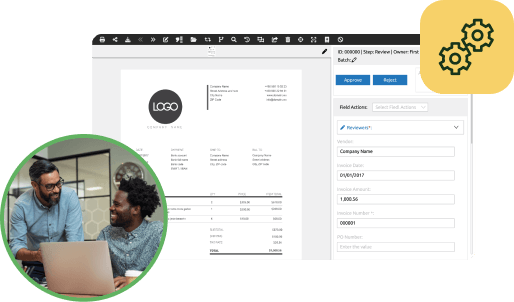
Wadih Pazos
Wadih founded both PairSoft and PaperSave. He is an avid technologist who specializes in streamlining operations and maximizing productivity.
View all posts by Wadih PazosWadih Pazos

In enabling this combination, corporations are seeing a new level of flexibility in how they manage money and talent management and monitor the wellbeing of organizations. Placing different aspects of corporate technology behind these endeavors is helping to make sure everything runs more fluidly, thereby helping to cut costs as well. Part of the push behind these initiatives is due to the rise of big data, unstructured information that requires curation and management before it can be placed into a maintained storage resource.
According to AMEinfo, corporations need to use these resources more efficiently in order to better utilize big data resources, information that can be better managed with electronic workflow and other forms of automation. Harvesting valuable insight from these sources of information do require some effort, but once corporations crack the code on how to create appropriate tools, they will experience much better employee and customer engagement levels.
“[Small businesses] face the same challenges as larger enterprises, when it comes to managing, storing and analyzing information,” said June Manley of AMEinfo. “Accessing the right information for business decision-making is a fundamental issue.”
These tools are moving to a whole new level thanks to mobile deployments and electronic workflow management resources. Converting information to digital infrastructure allows corporations with BYOD programs to access invoices, monitor payments and keep up with financial and human resources data from wherever they are. These systems are also coming into play through conventional desktops and laptops, CRM Buyer reported. The source stated that companies are focusing on graphical user interfaces that allow high tech gesture and touch screen inputs, allowing for a more personalized experience every time people make use of such systems.
The rise of mobile apps is driving companies to ask for more purpose-specific software options. This is making electronic workflow both more favorable and flexible, as well as the perfect solution for businesses trying to expand their productivity without incurring additional costs.
Get a free demo to learn how our tailored workflows have boosted the AP performance for organizations of all sizes.


Many organizations start with manual receipt handling, fragmented card feeds and slow AP processes. Implement AI agents to auto-capture receipts, route approvals, enable punch-out buys and post to the ERP.
Result: faster batching, fewer errors and cost savings. “This saves us hours every month.”
Many organizations face slow, paper-heavy AP and fragmented procurement that waste time and inflate costs. AI Agents can automate approvals, PO matching and record sync to improve speed, accuracy and control. Client quote: “It freed up hours and made our process reliable.”
Operational drag and rising costs slow growth: teams waste time on manual tasks, misaligned priorities and opaque processes. AI Agents help automate routine work and coordinate actions across teams. “We’ve lost time to repeats and handoffs,” says a typical client.
Companies struggle with manual procurement, fragmented approvals, and costly integrations that slow growth and obscure spend. Our AI Agents streamline requisitions, POs, and invoice matching to cut manual work and improve visibility. “We were wasting time and missing insights,” says a client.

Many teams start with fragmented PO/AP systems, manual matching and delayed financial reporting. Deploying AI agents to automate PO checks, real-time encumbrance tracking and invoice matching reduces processing time and errors, delivering live budgets and faster closes. “Finally, we can see current balances and approve instantly.”
Many companies juggle growing invoice volumes and legacy systems. They struggle with manual processes, compliance gaps and limited headcount. Our AI Agents automate integrations, enforce rules and surface exceptions. The typical outcome: faster closes and measurable ROI. “We stopped chasing invoices.”